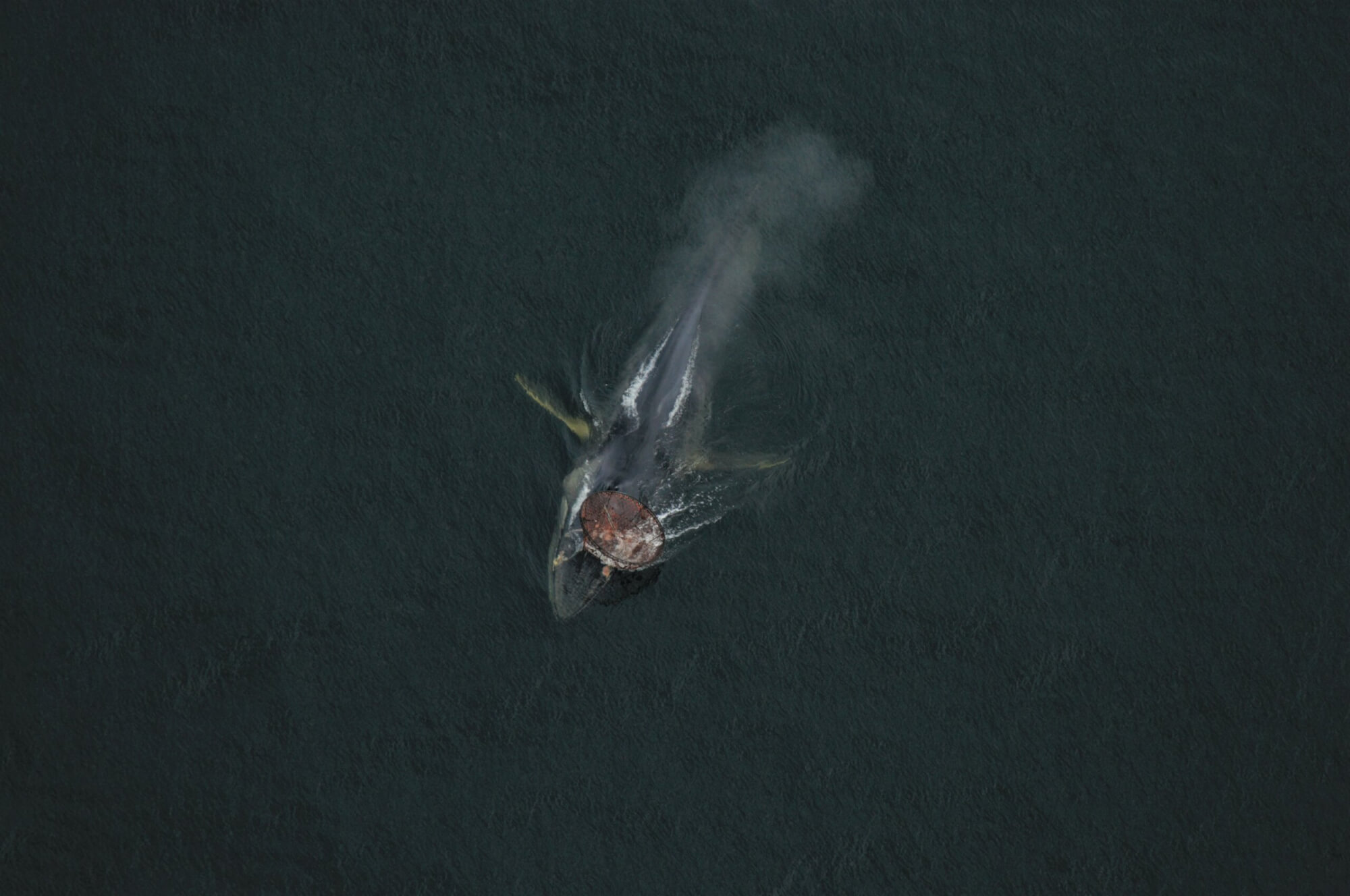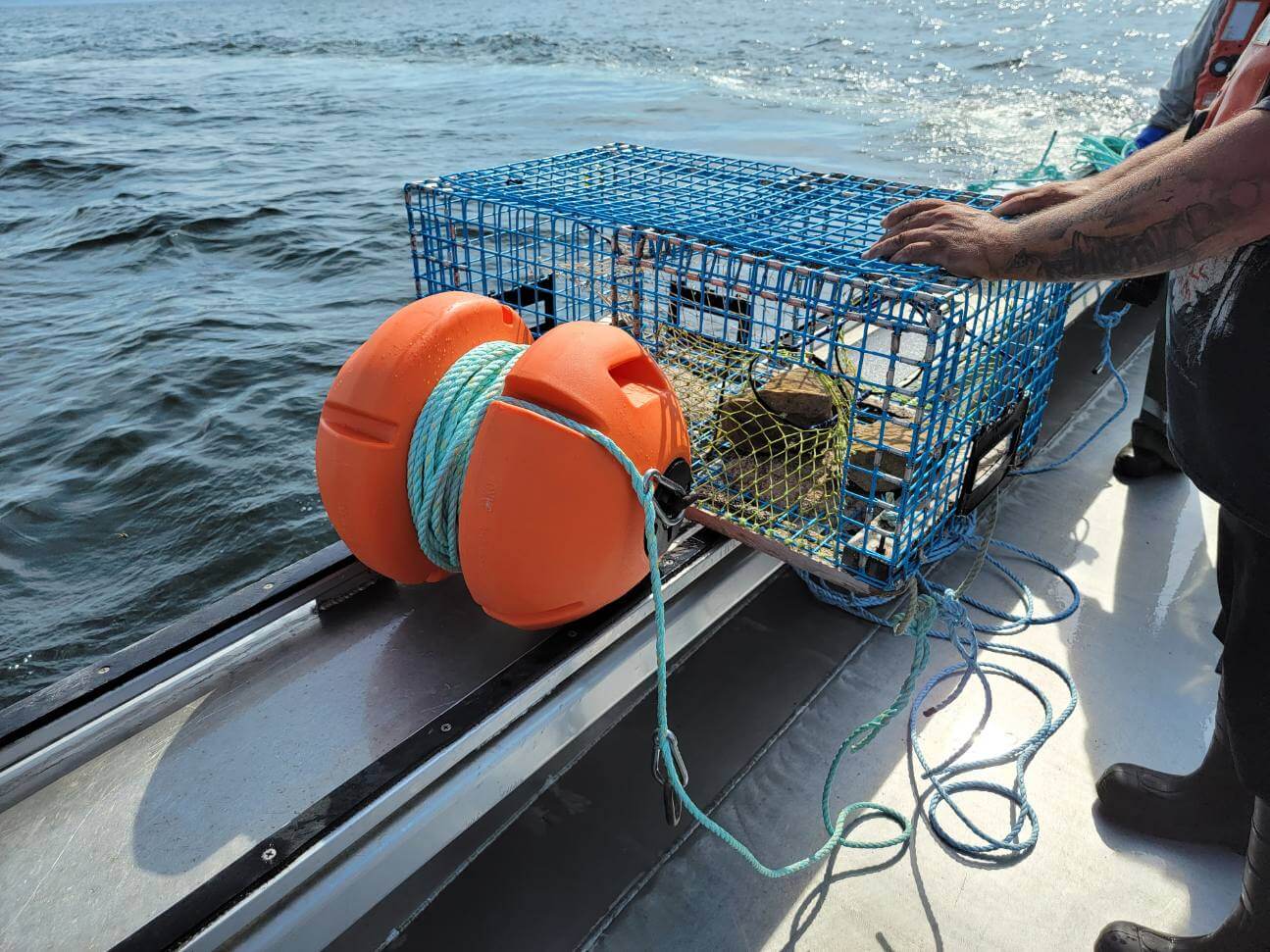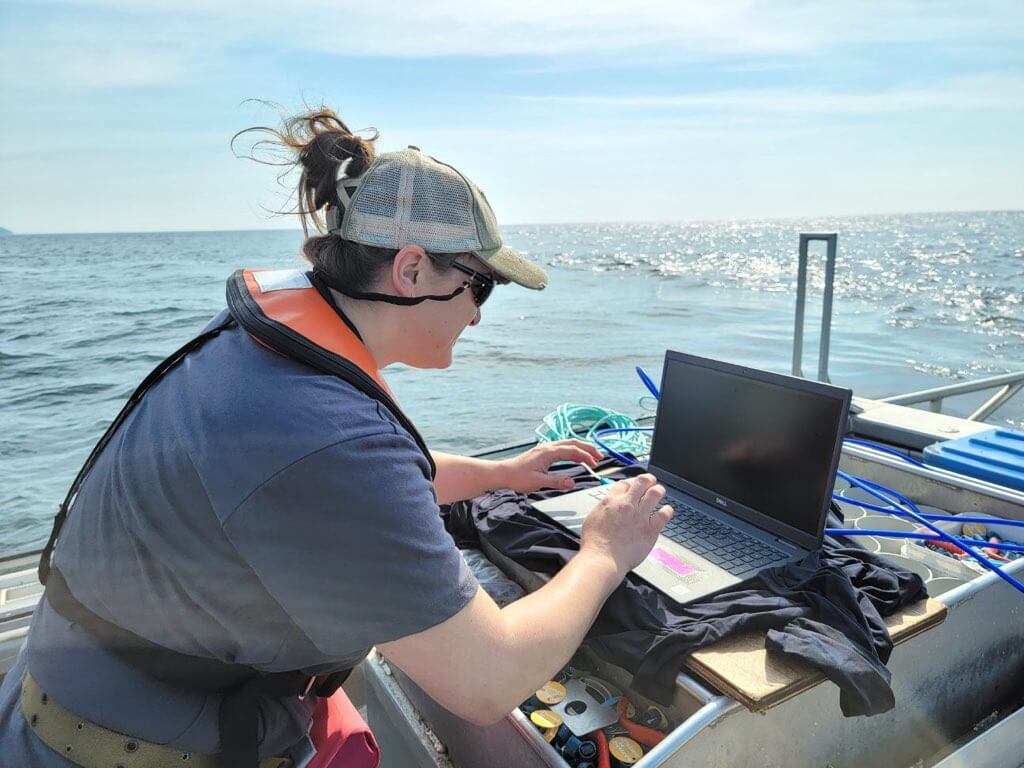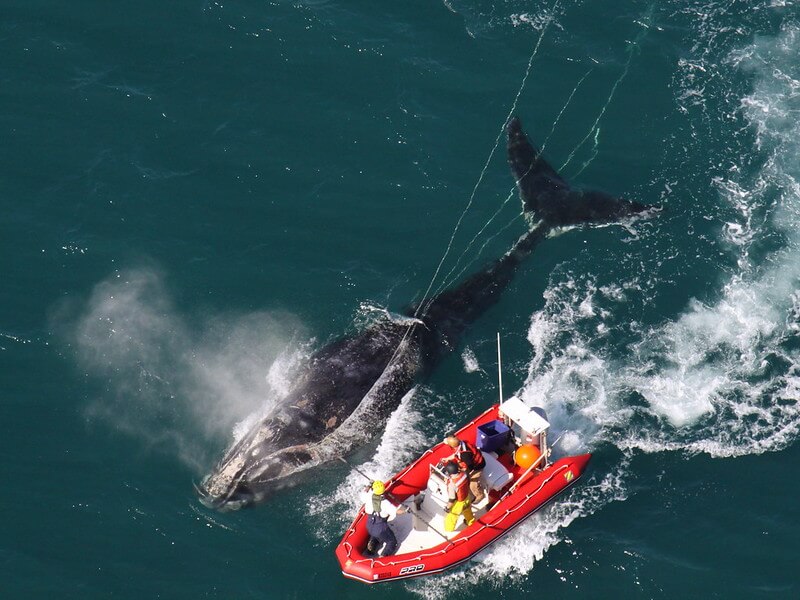Over the past several years, the novel field of ropeless fishing has been expanding thanks to the research and development of new concepts. These new whale-safe devices offer hope both for the protection of individual animals and the recovery of their species. One species in particular that stands to benefit from these developments is the North Atlantic right whale, whose population numbers just 340 individuals.
Starting with the 2023 fishing season, Fisheries and Oceans Canada is mandating the use of gear that is either ropeless or equipped with low-breaking-strength ropes and links. This requirement applies only to non-tended fixed gear fisheries in the waters of Atlantic Canada and Quebec. Traditional fishing gear poses entanglement hazards to marine mammals, as the ropes can get wrapped around their body when they are swimming or feeding.
The great whales and their predicament
North Atlantic right whales are caught between the Canadian and American fishing industries. These cetaceans have begun frequenting the Gulf of St. Lawrence since 2015. This section of the river begins at Pointe-des-Monts and opens into the Atlantic Ocean via the Cabot and Belle Isle straits. The species is abandoning the Bay of Fundy and the Scotian Shelf, where the Grand Manan Basin and Roseway Basin protected areas are located, respectively. The risks of ship strikes and entanglements in the Gulf of St. Lawrence are substantial. A study published in 2012 concluded that 83% of documented North Atlantic right whales have experienced at least one entanglement in their lifetime, and 59% have suffered two or more! Calves and juveniles are more prone to entanglement than adults.
Other species of large whales are also susceptible to entanglements. The cases of Capitaine C[DA2] rochet, a fin whale, and Tryphon, a sperm whale, are well known to the public. These two individuals succumbed to their respective entanglements in crab trap ropes. More recently, off the coast of Cape Breton, a sperm whale starved to death after ingesting 150 kilos of fishing gear (article in French). Entanglements in fishing gear can also affect turtles, seals and seabirds.
Entanglements are caused in part by fixed gear such as traps used to catch crustaceans and fish. These devices can number in the thousands! Whales must navigate their way through a habitat cluttered with such gear, which gets caught in their mouths or wrapped around their bodies and fins. Accidental entanglements in ropes or traps are very energy intensive for marine mammals. They compromise the animals’ ability to swim, feed and reproduce, in addition to occasionally leading to amputations, lacerations, and reduced fertility. These incidents can ultimately end in death by drowning or exhaustion. The new field of alternative fishing equipment is therefore part of an effort to reconcile fishing activities and marine wildlife conservation.
Traditional fishing gear to blame
Many entanglements are caused by traditional fishing gear. The Marine Mammal Observation Network reports that “On Canada’s east coast, fixed gear such as traps/pots, gillnets or bottom-set longlines are the types of tackle most often to blame in this type of event.” In the Maritimes and in Quebec, the snow crab, rock crab and lobster fisheries use traps tethered to buoys that float on the surface, which allow owners to locate their equipment. The breaking strength of the ropes connecting the trap to the buoy in the event of an entanglement depends on the diameter of these ropes. A large diameter rope is less likely to snap in the event of an entanglement, while a small diameter can cause lacerations to the skin of trapped animals.
Ghost gear is another element that contributes to entanglements. This category of gear comprises ropes, fishing lines, traps and nets that have been abandoned, lost or otherwise discarded (ALDFG). Every year, an estimated 600,000 to 800,000 tonnes of ghost gear end up in our oceans. Ghost gear accounts for roughly 10% of the refuse in the oceans, and can take up to 600 years to break down in this marine environment! This material also contributes to the presence of microplastics in the water and disturbance of the seabed.
According to the Campobello Whale Rescue Team, fishing gear in Canada is usually marked, which helps determine the gear type as well as the fishing area and region that it came from. In Canada, it is mandatory to identify non-tended fishing gear as well as to report any lost gear or interactions between fishing gear and marine mammals.
It is illegal to intentionally leave fishing gear in the water. This kind of deliberate action mainly pertains to fishers engaged in illegal harvesting that have to hide their equipment. Indeed, for law-abiding parties, it would be too costly to simply abandon their equipment at sea. Lower yields and equipment losses are hardly in their best interest!
The Canadian federal government has adopted a series of protective measures whenever the presence of one or more North Atlantic right whales is detected during the fishing season. Speed restrictions are imposed on certain types of boats and fishing areas are closed if this endangered cetacean is known to be present. Fines may be issued for failure to comply with these mandatory measures.
Innovative fishers
Solutions often come from the fishing industry itself! Across Canada, numerous initiatives have been launched to reduce the severity and duration of entanglements. A rethink is underway to redesign buoys and traps with fewer vertical ropes cluttering the marine environment
The Gaspé-based company Ocean-Cam, whose CEO hails from the fishing industry, has designed the JakO buoy. Designed to be simple and efficient for fixed gear, this buoy and a spool of rope remain suspended 2 m above the trap, which rests on the ocean floor. When the fisher is ready to retrieve his or her traps, the buoy is deployed and rises straight to the surface. The mechanism is triggered by an acoustic electronic signal captured by a hydrophone mounted onto the hull of the fishing boat. These sound signals are collected by a user-friendly software system. The buoy is currently undergoing testing and is being developed in consultation with the fishing sector. The JakO buoy would allow fishing activities to continue, even if right whales are present! This innovation also ensures a better gear recovery rate, which limits the proliferation of ALDFG in Canadian waters. Its commercialization is planned for 2023.
A virtual system that records the GPS coordinates of the positions where the gear was deployed allows fishermen to locate this innovative equipment. It informs other fishers in the same area that gear is present with a view to avoiding an excessive quantity of equipment in any one sector.
Companies are also developing low breaking-strength links as well as ropes with precise diameters, the ideal being 16 mm (5/8 inch). A force of less than 1,700 pounds is sufficient to break this equipment, meaning ensnared whales are able to free themselves more easily. Still, the best way to eliminate entanglements is to keep ropes out of the oceans altogether!
Ready to deploy
The Whalesafe Gear Adoption Fund has been established by the Canadian government to fund the purchase, testing and enhancement of fishing gear. This $20 million fund aims to encourage the marketing and supply of this new equipment by Canadian manufacturers across the country.
The canFISH Gear Lending Program, a non-profit organization supported by the Canadian Wildlife Federation, offers a loan service to fishers to test cages with ropes on demand, weak ropes and attachments as well as than other accessories.
In addition to initiatives to develop alternative fishing gear, other actions have also been put in place to support this economic sector while at the same time protecting species in their native habitat. For example, fishing periods are adjusted in accordance with the presence of marine mammals. The visual or acoustic detection of a right whale triggers the temporary or seasonal closure of certain areas where non-tended fixed gear is used. These adjustments depend on the water depth, however: fishing can remain permitted or be moved closer to the coast. Acoustic and visual monitoring requires the installation of hydrophones and increased wide-scale aerial surveillance.
Information sharing and collaboration between organizations give rise to initiatives such as the Whale-Insight interactive map, which can be used to report and track sightings of North Atlantic right whales in Canadian waters. The recovery of ghost gear is also an important part of efforts to reduce marine mammal entanglements.













